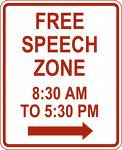By David Mildenberg
July 21 (Bloomberg) -- Bank of America Corp., the biggest U.S. lender, will post a profit in 2010 and avert a charge tied to credit-card losses, KBW Inc. said in a report, backtracking from yesterday’s prediction of a loss.
The bank will adjust its capital rather than take a $12 billion pretax charge to earnings in the first quarter of 2010 to comply with new rules for recording card losses, KBW said today. That should lead to a net gain of 80 cents in 2010 instead of a 10-cent loss, analyst Jefferson Harralson wrote.
“We understand the reserve-building costs of bringing about $150 billion in assets onto the balance sheet will be an adjustment to capital” rather than the earnings statement, he said in today’s report, which rates the stock “outperform.”
Bank of America, which accepted $45 billion from the U.S. rescue fund, boosted common equity by more than $38 billion to close a capital gap found by U.S. stress tests in May. KBW today said it now expects a $7.9 billion capital adjustment tied to the card losses, equating to 91 cents a share, at the Charlotte, North Carolina-based bank.
The charge relates to $150 billion of card receivables and other assets that will be recorded on the bank’s balance sheet starting in January under a change in U.S. accounting rules. As banks move assets to the balance sheet, they must add capital to cushion potential losses.
The lender declined to comment on KBW’s estimate, spokesman Scott Silvestri said. Harralson said he changed his report after discussions with bank officials. Accounting rules lack clarity and it’s unclear what percentage stake Bank of America holds in entities that aren’t included on its balance sheet, he said.
Shared Ownership
Companies use off-balance-sheet vehicles while sharing ownership with other investors. Under accounting rules, “when the structures come back on is when you need to put your reserves on,” Chief Financial Officer Joe Price told analysts on conference call last week.
Accounting industry rule-makers considered enabling banks to spread the costs over several quarters, he said, “but that’s not the way it ended up.”
“What we know is that $150 billion is coming onto the balance sheet, and that is going to require a capital adjustment to reserve for these new assets,” Harralson, whose company specializes in financial services companies, said in a telephone interview. “This will be a call on Bank of America’s capital position, and they have another call on the repayment of TARP and another one in the form of higher loan loss rates.”
TARP refers to the Treasury Department’s Troubled Asset Relief Program, which supplied lenders with rescue funds.
Card Receivables
Bank of America’s second-quarter profit fell 5.5 percent to $3.22 billion on losses from credit-card, small business and housing loans, the bank said July 17. The card unit posted a $1.62 billion loss, and rules approved by Congress to curb card interest rates and fees may trim revenue as much as $700 million in 2010, Chief Executive Officer Kenneth Lewis said.
Bank assets held off the company’s balance sheet include $85 billion in credit-card receivables, along with securities backed by pools of home-equity loans and other asset-backed products, New York-based KBW said.
To contact the reporter on this story: David Mildenberg in Charlotte at dmildenberg@bloomberg.net
Last Updated: July 21, 2009 16:22 EDT
http://www.bloomberg.com/apps/news?pid=20601103&sid=amYmu_5nX3UE
Friday, July 24, 2009
Subscribe to:
Post Comments (Atom)














No comments:
Post a Comment